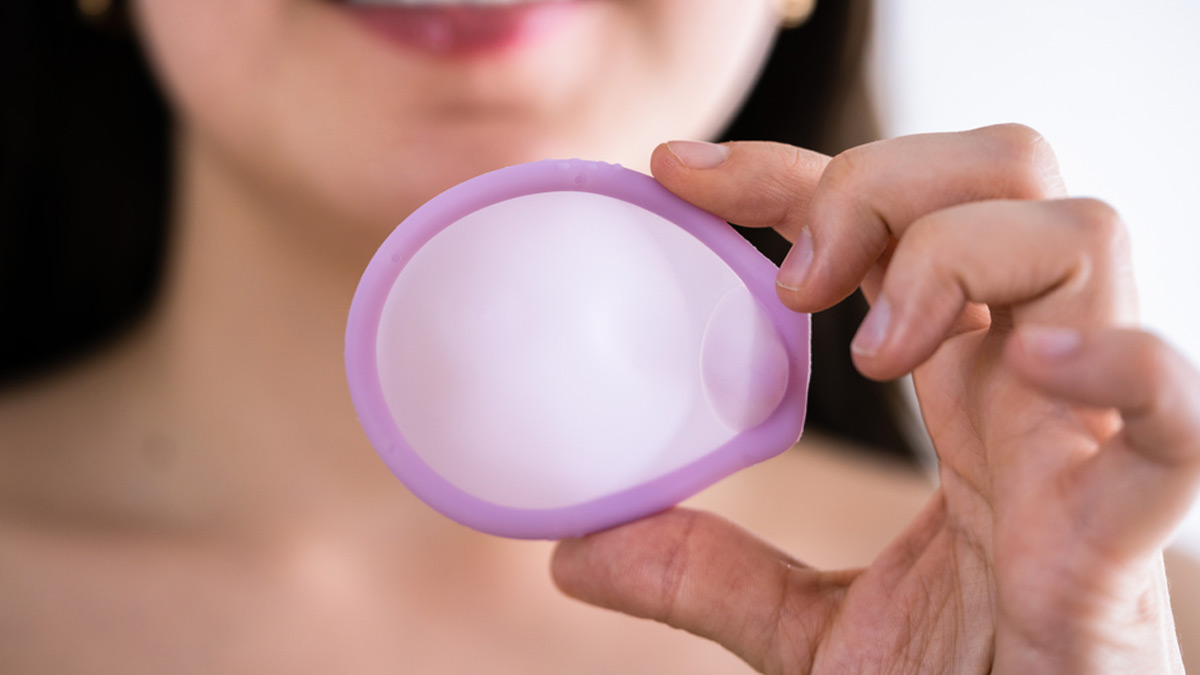
Choosing the right birth control can be confusing with so many options out there. If you’re looking for something easy and effective, the vaginal ring could be a good choice. This small, flexible ring is placed in the vagina and releases hormones to prevent pregnancy. It’s convenient and lets you enjoy intimacy without interruption. However, like all methods, it has its benefits and downsides. We spoke to our expert Dr Gandhali Deorukhkar, Consultant - Obstetrics and Gynaecology, Wockhardt Hospitals Mumbai Central, who explained what makes the vaginal ring stand out and what to consider before using it.
Table of Content:-

“The vaginal ring, a popular form of hormonal birth control, offers a convenient and effective method for preventing pregnancy. Known by brand names like NuvaRing, this small, flexible ring is inserted into the vagina, where it releases hormones to prevent ovulation. This flexible ring releases hormones that prevent ovulation, functioning similarly to the combined oral contraceptive pill,” said Dr Deorukhkar.
According to a 2007 study, The ring doesn’t need to be positioned in a specific part of the vagina and can be comfortably worn during intercourse. It is designed to be comfortable for both the user and their partner. Additionally, the vaginal ring can be used alongside tampons, spermicide, or antifungal treatments without affecting its effectiveness or causing any adverse effects.
Pros of the Vaginal Ring
Dr Deorukhkar listed the benefits of using a vaginal ring as follows:
Ease of Use

The vaginal ring is designed for ease of use. It is inserted into the vagina by the user and remains in place for three weeks. After this period, the user removes it for one week, during which time they have a menstrual-like withdrawal bleed. This simplicity makes it a convenient option for many women.
Effective Birth Control
"When used correctly, the vaginal ring is over 99% effective in preventing pregnancy. It works by releasing a combination of oestrogen and progestin, which prevents ovulation and thickens cervical mucus to block sperm," said Dr Deorukhkar. This high efficacy makes it a reliable choice for those who are looking for a highly effective contraceptive method.
Also Read: Understanding Birth Control Cessation: Expert Lists Methods, Reasons, And Fertility Restoration
Reduced Hormonal Fluctuations

Unlike oral contraceptives, which require daily intake, the vaginal ring’s hormone levels are steady and consistent throughout the month. This can help minimise the hormonal fluctuations that some users experience with daily pills, leading to fewer mood swings and less acne.
Fewer Monthly Bleeds
Many users find that the vaginal ring can lead to lighter and less frequent menstrual bleeding. Some may even experience amenorrhea (absence of menstruation), which can be a significant benefit for those who suffer from heavy or painful periods.
Reversible
Fertility typically returns quickly after discontinuing the vaginal ring. Women who wish to become pregnant can usually conceive shortly after removing the ring and resuming their normal menstrual cycle.
Cons of the Vaginal Ring
Insertion and Removal

While generally easy to use, some women may find the insertion and removal process uncomfortable or awkward at first. It requires some level of comfort with their body and may necessitate practice to become proficient.
Side Effects
"Like other hormonal contraceptives, the vaginal ring can cause side effects, such as nausea, headaches, mood swings, and breast tenderness. These side effects are often similar to those experienced with other hormonal birth control methods, but their severity can vary from person to person," added Dr Deorukhkar.
Vaginal Discharge

Some users report an increase in vaginal discharge while using the ring. This discharge is usually normal and not a cause for concern, but it can be bothersome for some women.
Also Read: Vaginal Discharge Guide: Here's How You Can Identify Abnormal Discharge And When to See a Doctor
Risk of Displacement
Although rare, the ring can become displaced or fall out. If this happens, it needs to be replaced within a specified time frame to maintain contraceptive effectiveness. This can be inconvenient and requires prompt action to ensure continued protection.
Health Risks
The vaginal ring carries similar health risks to other hormonal contraceptives, such as a slight increase in the risk of blood clots, especially in smokers and women over 35. Women with certain health conditions or risk factors need to consult with their healthcare provider before choosing this method.
Cost
Depending on health insurance coverage, the vaginal ring can be more expensive than other forms of contraception. Users should consider the cost and check with their insurance provider to understand their coverage options.
Bottomline
Dr Deorukhkar concluded, “The vaginal ring offers a highly effective and convenient birth control option with several benefits, including ease of use and reduced hormonal fluctuations. However, it also has potential drawbacks, such as side effects and the risk of displacement. Women considering the vaginal ring should weigh these pros and cons and consult with their healthcare provider to determine if it is the right choice for their individual needs and health conditions.”
[Disclaimer: This article contains information provided by an expert and is for informational purposes only. Hence, we advise you to consult your own professional if you are dealing with any health issues to avoid complications.]
Also watch this video
How we keep this article up to date:
We work with experts and keep a close eye on the latest in health and wellness. Whenever there is a new research or helpful information, we update our articles with accurate and useful advice.
Current Version
